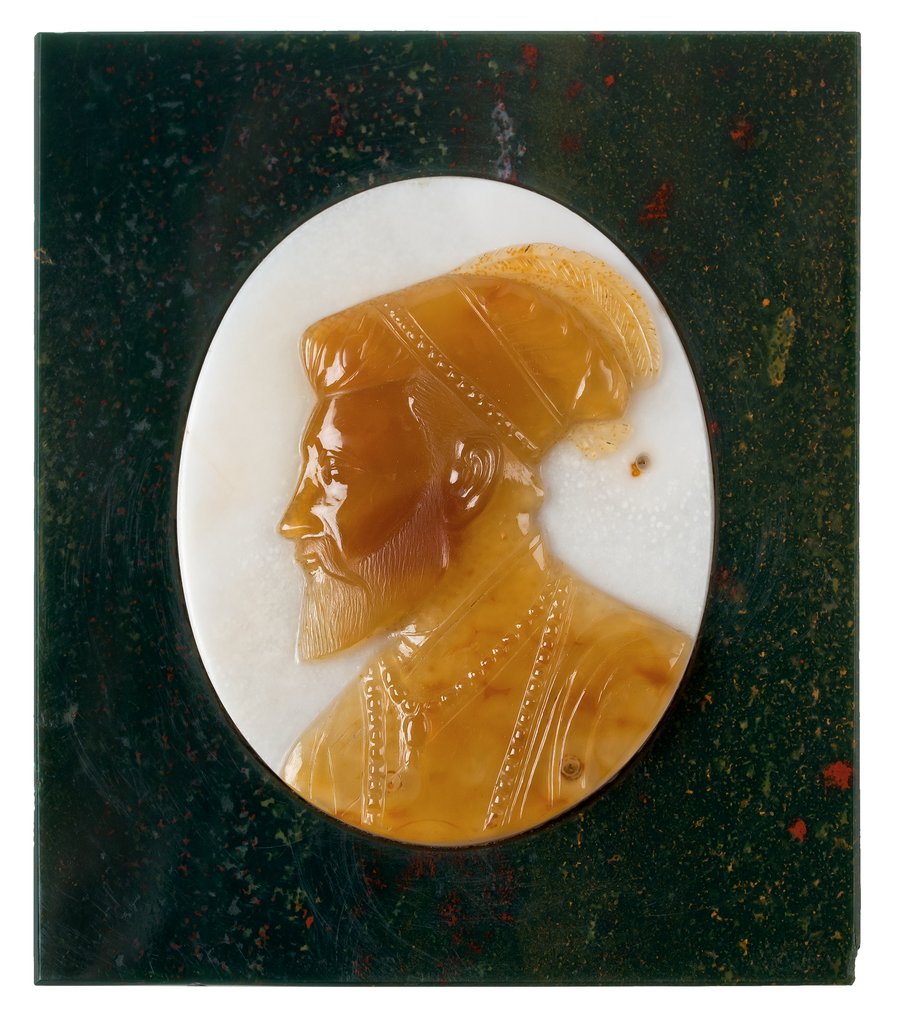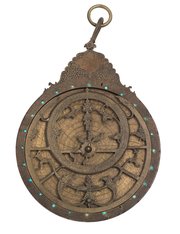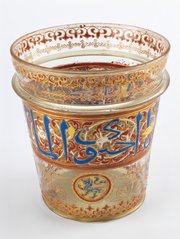
Cameo
Museum of Islamic Art
- Title:
- Cameo
- Patron:
- Shah Jahan
- Production place:
- India
- Date:
- 1800 - 1899
- Period:
- 19th century CE
- Title:
- Cameo
- Patron:
- Shah Jahan
- Production place:
- India
- Date:
- 1800 - 1899
- Period:
- 19th century CE
- Material:
- Sardonyx, Bloodstone
- Technique:
- Carving, Cameo glass
- Dimensions:
- 4.1 × 3.3
This oval shaped cameo is carved from a polychrome sardonyx stone, and depicts the Mughal emperor Shah Jahan (r. 1037-68 AH/1628-58 CE). His portrait has been masterfully carved in shallow relief, using the stone's natural hues to highlight various details. The Emperor is shown richly jewelled in profile, a model which most likely came from Mughal miniatures. A small group of securely dated cameos exist from the period of Shah Jahan, all of which have been attributed to European lapidaries who worked at the court of both emperors Jahangir (r. 1013-37 AH/1605-27 CE) and his son, Shah Jahan; although this one is dated to the 13th century AH/19th century CE. While carved portrait cameos, in particular, arrived into the Mughal court through Europeans, the tradition of hard stone carving was already firmly established in India; indeed, Shah Jahan was known to have been an accomplished amateur carver himself. Cameos like this one continued to be made in later centuries, often by Indian lapidaries, and set into jewelled pendants to be worn.



